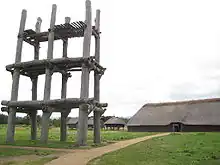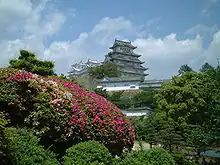Pre-modern Japan
account of past events in the Japanese civilisation
Japan is one of Asia's oldest civilizations. While the Japanese archipelago was settled in 50,000 BC, classical Japan was founded in 660 BCE with its first Emperor Jimmu according to its historical text Kojiki and Nihon shoki. Since 1966 this date has been celebrated as 'National Foundation Day' or Kigensetsu 紀元節 (Festival of the Accession of the First Emperor and the Foundation of the Empire) every February 11th. Being an island nation has allowed Japan to develop a unique culture but at the same time, the proximity of Imperial China and pre-modern Korea have also left lasting influences that can still be seen in modern Japanese culture today. The Mongol Empire, which conquered much of Asia, barely failed to invade Japan.
For most countries, the line between pre-modern and modern history is difficult to draw. Not so for Japan; the country was virtually isolated from the outer world until the Black Ships Incident in 1853, which opened the country for commerce. With extensive social reforms, leading up to the Meiji Restoration in 1868, Japan became the first non-Western nation to industrialize.
While Japan has become known for advanced technology and pop culture, and aerial bombardment combined with iconoclastic urban planning have many cities devoid of buildings predating the 1850s, much of the traditional heritage is well preserved.
| Japan historical travel topics: Pre-modern Japan → Japanese colonial empire Japanese castles • Sites of Japan's Meiji Industrial Revolution |

